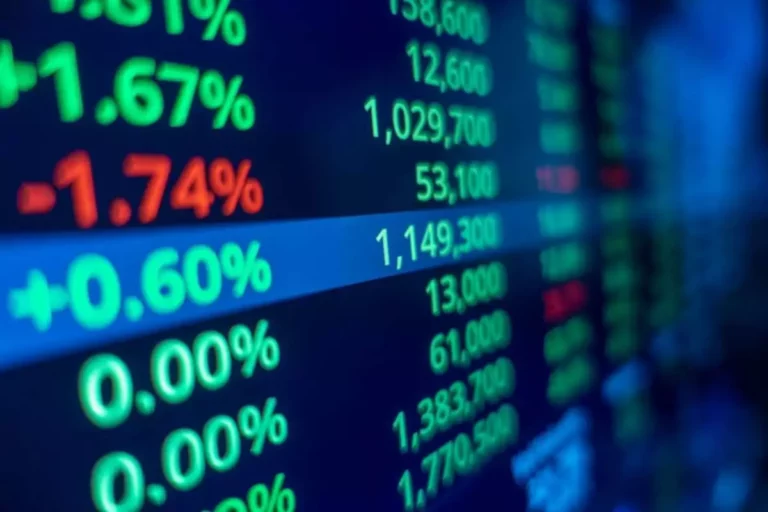Content
The „opening automated reporting system“ (OARS) aided the specialist in determining the market clearing opening price (SOR; Smart Order Routing). You can decide on the actual Proof of work securities you want to trade based on market view or through visual correlation (in the case of pair trading strategy). Establish if the strategy is statistically significant for the selected securities.
Example of a Mean Reversion Strategy
Traders often employ sophisticated https://www.xcritical.com/ backtesting methodologies for robust algorithmic evaluation before deploying their strategies in live markets. This is to create a sufficient number of sample trades (at least 100+ trades) covering various market scenarios (bullish, bearish etc.). Ensure that you make provisions for brokerage and slippage costs as well.
Bookmap Review: The Best Software and Broker Integration for Trading in 2025
(He was a tenured math professor prior to becoming a Wall Street legend.) But happily, you don’t need years of quantitative experience to succeed with algorithmic trading. Algorithmic trading provides a more systematic approach to active trading than methods based on trader intuition or instinct. Peter’s journey highlights how personalised guidance and practical learning can transform trading aspirations into reality. Success in this area is dependent on a thorough understanding of different high-frequency and arbitrage strategies in relation to market dynamics. Layering is another high-frequency market manipulation tactic that influences the price of an asset. A common example here is Pepsi and Coke, since what is algorithmic trading example both are established players in the same industry.
- If the chance is missed, they have to wait for another match to be found.
- Algorithms are simply a set of defined instructions to make trade decisions based on specific criteria, like the price of a security.
- The standard deviation of the most recent prices (e.g., the last 20) is often used as a buy or sell indicator.
- Knight has traded out of its entire erroneous trade position, which has resulted in a realized pre-tax loss of approximately $440 million.
- As a result, traders have to complete the deals as soon as they are notified of a match.
- While this is a simple example, the power of algorithmic trading lies in its speed, scalability, and uptime.
How Is High-Frequency Trading Different From Algorithmic Trading?
The most popular form of statistical arbitrage algorithmic strategy is the pairs trading strategy. Pairs trading is a strategy used to trade the differentials between two markets or assets. Pairs trading is essentially taking a long position in one asset while at the same time taking an equal-sized short position in another asset. By letting a machine do the trading for you, your strategy (as long as it’s clearly defined) can be executed with your rules on your behalf. In short, in trading, the set of instructions or rules is given to the computer (by the trader) to automate the execution of trade orders via the stock exchange with minimal human intervention.
The related “steps strategy” sends orders at a user-defined percentage of market volumes and increases or decreases this participation rate when the stock price reaches user-defined levels. Time-weighted average price strategy breaks up a large order and releases dynamically determined smaller chunks of the order to the market using evenly divided time slots between a start and end time. The aim is to execute the order close to the average price between the start and end times, thereby minimizing market impact. Explicit collusion is illegal, and implicit collusion is difficult to maintain, as informed investors always have the incentive to deviate from the agreement to enhance their short-term profits. Moreover, effective monitoring of each other’s behavior is hindered by significant information asymmetry in financial markets. That said, it all comes back to price inefficiencies, and if an investor understands how prices correlate and relate to others, then algorithmic trading can be a profitable venture.

This is done by creating limit orders outside the current bid or ask price to change the reported price to other market participants. The trader can subsequently place trades based on the artificial change in price, then canceling the limit orders before they are executed. Quantra’s self-paced algorithmic trading courses are one of the most demanded courses. It’s Algorithmic Trading for beginners learning Track provides you a list of goals to choose from. Each goal presents you with an organized set of such informative courses that should serve your purpose. You can also check out these quant algo trading courses offered by Quantra.
They use algorithms to execute trades rapidly, optimize strategies, and capitalize on market inefficiencies. Prop firms leverage advanced technology and data analysis to gain a competitive edge, making algorithmic trading a key component of their operations. There are many advantages to algo trading depending on the type of player and market traded in.
In addition, the liquidity provided by algo-traders can almost disappear instantly or in seconds. Algos allow you to remove the human element from your trading, something that keeps many traders from consistently making money. On top of that, you can enjoy speed, scalability, and diversification far beyond what is possible with manual trading. Additionally, TrendSpider provides you with automated technical analysis and pattern recognition capabilities to help you tease out even more profitable ideas from the market.
With these simple technical strategies, a trade is entered at the occurrence of easily identifiable signals. The same technical signals are also used to flag exit opportunities in this example. Your trade will then be executed based on the best price available, whether you have a long or short position, as soon as market conditions are met. The StoneX One Pro trading platform, designed for professional traders, provide access to the technology and liquidity needed for optimized algo performance. Suppose a trader follows a trading criterion that always purchases 100 shares whenever the stock price moves beyond and above the double exponential moving average.
Before we move on to the examples, let’s go over the fundamentals with this video and see how market makers offer liquidity, manage risks, and contribute to market stability. When one stock outperforms the other, the outperformer is sold short and the other stock is bought long, with the expectation that the short-term diversion will end in convergence. This often hedges market risk from adverse market movements i.e. makes the strategy beta neutral. It is important to time the buys and sells correctly to avoid losses by using proper risk management techniques and stop-losses. Momentum investing requires proper monitoring and appropriate diversification to safeguard against such severe crashes. WallStreetZen does not provide financial advice and does not issue recommendations or offers to buy stock or sell any security.Information is provided ‚as-is‘ and solely for informational purposes and is not advice.
The best place to find algorithmic trading strategies for dummies is on GitHub. If you can’t build from the ground up your own algo machine you have the option to buy algorithmic trading strategies. However, picking the right algorithmic trading strategy is not an easy task. When several small orders are filled the sharks may have discovered the presence of a large iceberged order.
The speed of data processing also greatly improves decision-making and execution, fixing the problem of markets changing before you manage to make a trade. Like all trading strategies, implementing good risk management, like stop-losses, position sizing and diversification, is essential. Backtesting the algorithm – that is testing it using historical data – may not be necessary for a pre-existing algorithm. That said, thorough testing of how the algorithm works and its suitability for live markets is key.
The weighted average price strategy is a popular choice among algo traders in volatile markets. This strategy aims to protect against the impact of sudden price fluctuations by executing trades at or as close as possible to the volume-weighted average price (VWAP) or time-weighted average price (TWAP). By basing trading decisions on these average prices, traders can minimize the risk of buying or selling at extreme prices.

